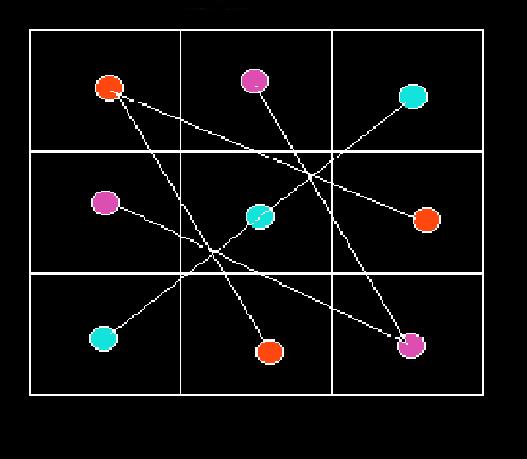

Andrew Bremner's article on squares of squares included the 3x3 square:
| 582 | 462 | 1272 |
| 942 | 1132 | 22 |
| 972 | 822 | 742 |
The numbers in the right diagonal as the tuple (972,1132,1272) appears to have come out of the blue. But I will show that this sequence is part of a larger set of tuples having the same property, i.e. the first number in the tuple when added to a difference (Δ) gives the second square in the tuple and when this same (Δ) is added to the second square produces a third square. All these tuple sequences can be used as entries into the right diagonal of a magic square.
It was shown previously that these numbers are a part of a sequence of squares and this page is a continuation of that effort.
I will show from scratch, (i.e. from first principles) that these tuples
(a2,b2,c2)
whose sum a2 + b2 +
c2 − 3b2 = 0
are generated from another set of tuples that obeys the equation
The diagonal of a magic square consisting of square entries has the sum
Table Tr consists the first seven tuples found using the formula
c2 = 2b2 − 1. The second table Ti
which will be used in the generation of complex squares, i.e., those with real and imaginary coefficients, consists of the first
seven tuples found using the formula
The desired
In addition the entries in the columns may be ±1 giving eight combinations of (+ + +), (+ + −), (+ − +), (− + +),
(+ − −), (− + −), (− − +) and (− − −) to generate eight Tuple tables. Each row in a tuple table will be used
to generate secondary tables that will produce the requisite squares (a2,b2,c2)
whose sum
If we look at the entries in the columns as a sequence of numbers, then the sequence of positive numbers from Table Tr columns 2 and column 3,
cn are the the known Sloane A001653 and Sloane A002315 numbers,
respectively.
For table Ti the sequences from the second and third columns are the known
|
|
This concludes the introduction to the sequence table page.
Go back to homepage.
Copyright © 2011 by Eddie N Gutierrez. E-Mail: Fiboguti89@Yahoo.com